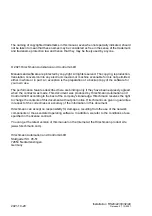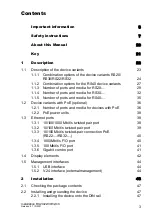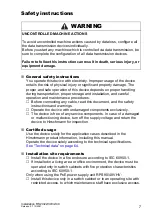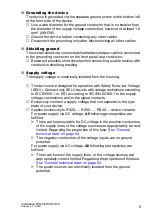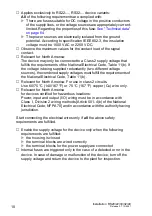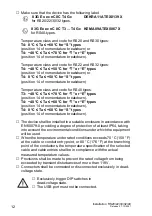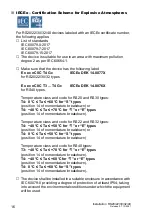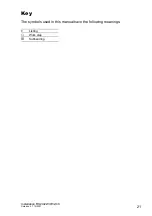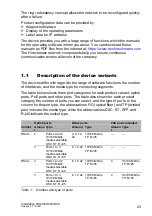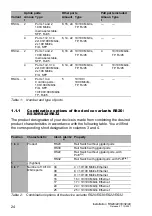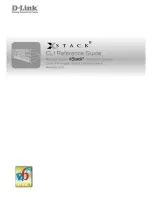
10
Installation RS20/22/30/32/40
Release 07 10/2021
Applies exclusively to RS22-..., RS32-... device variants:
All
of the following requirements are complied with:
There are fuses suitable for DC voltage in the positive conductors
of the supply lines, or the voltage sources are appropriately current-
limited. Regarding the properties of this fuse:
See “Technical data”
The power sources are electrically isolated from the ground
potential. According to specification IEEE 802.3, the insulation
voltage must be 1500 V AC or 2250 V DC.
Observe the maximum values for the contact load of the signal
contact.
Relevant for North America:
The device may only be connected to a Class 2 supply voltage that
fulfills the requirements of the National Electrical Code, Table 11(b). If
the voltage is being supplied redundantly (two different voltage
sources), the combined supply voltages must fulfill the requirements of
the National Electrical Code, Table 11(b).
Relevant for North America: For use in class 2 circuits.
Use 60/75 °C (140/167 °F) or 75 °C (167 °F) copper (Cu) wire only.
Relevant for North America
for devices certified for hazardous locations:
Power, input and output (I/O) wiring must be in accordance with
Class I, Division 2 wiring methods [Article 501-4(b) of the National
Electrical Code, NFPA 70] and in accordance with the authority having
jurisdiction.
Start connecting the electrical wires only if
all
the above safety
requirements are fulfilled.
Enable the supply voltage for the device only when the following
requirements are fulfilled:
the housing is closed
the terminal blocks are wired correctly
the terminal blocks for the power supply are connected
Internal fuses are triggered only in the case of a detected error in the
device. In case of damage or malfunction of the device, turn off the
supply voltage and return the device to the plant for inspection.


